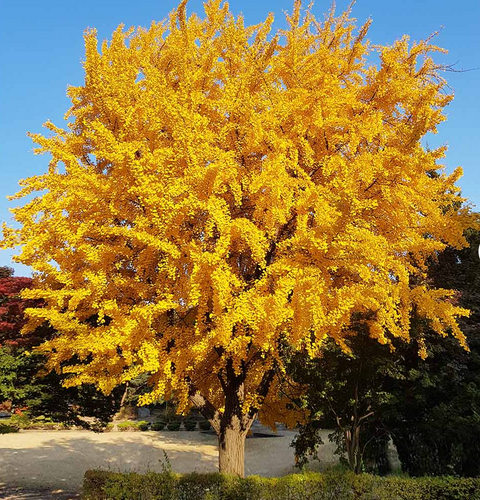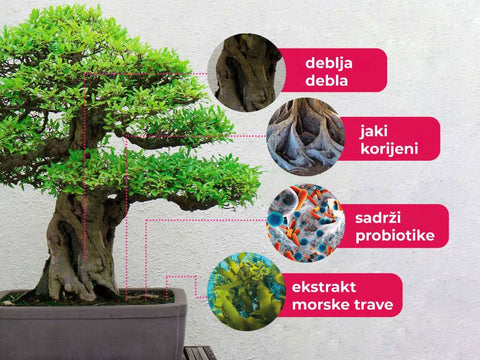Growing ginkgo at home
🌿 Features, characteristics and important factors
Ginkgo biloba, often simply called ginkgo, is one of the oldest living tree species in the world, with a history dating back more than 200 million years. Its wide-ranging uses in medicine and as an ornamental tree make it a popular choice for gardeners and plant lovers. Growing ginkgo at home requires some knowledge and patience, but with proper care, this tree can become a long-lasting asset with aesthetic and symbolic value.
🌿 Characteristics of ginkgo
Ginkgo biloba is a deciduous tree that can reach a height of 20 to 35 meters in its natural environment. Its main distinguishing feature is its fan-shaped leaves that turn golden yellow in autumn. It is a dioecious plant, which means that individual trees bear either male or female flowers. The fruits of female plants are sticky and emit a strong odor, so male trees are more often chosen for ornamental purposes.
Ginkgo is known for its resistance to urban conditions, such as pollution, poor soil, and extreme temperatures. It also has a long lifespan, with some trees reaching a thousand years of age. Because of these characteristics, it is popular in parks, streets, and gardens around the world.
🌿 Preparing for growing ginkgo at home
When growing ginkgo at home, it is crucial to choose the right location and provide the right conditions. You can grow ginkgo as a garden tree, in containers or even as a bonsai.
🌿 Select location
Ginkgo grows best in sunny and semi-shady locations. It needs plenty of light for healthy growth and intense leaf color in autumn. Since it is very hardy, it can also tolerate partial shade, but growth may be slower and the crown shape less symmetrical.
🌿 Soil
The tree grows best in well-drained, nutrient-rich soil. Before planting, it is recommended to prepare the soil by adding compost or other organic matter to improve its structure and nutritional value. Ginkgo is adaptable to soil pH, but grows best in slightly acidic to neutral soil.
🌿 Seedlings or seeds?
You can grow ginkgo from seeds or seedlings. Seeds require stratification, which means keeping them in the refrigerator for several months to simulate winter conditions. Seedlings are a more practical choice for those who want faster results, as growing from seeds is a more time-consuming process.
🌿 Planting ginkgo
When planting a ginkgo, it is important to choose the right location, as the tree can grow quite tall and wide over time. Plant the seedling in a hole that is twice as large as the root ball. Spread the roots carefully, then cover with soil and press down lightly. Water well to settle the soil around the roots.
If you are planting your ginkgo in a container, choose a large container with a drainage hole. Use a potting soil mix and ensure good drainage.
🌿 Care and maintenance
Ginko is relatively undemanding to care, but a few basic steps ensure its health and lush growth.
🌿 Watering
Ginkgo prefers moderately moist soil, but does not tolerate waterlogging. Regular watering is essential in the first few years after planting to ensure the root system develops well. As the tree matures, it becomes more drought-resistant, but it should still be watered occasionally during longer dry periods.
🌿 Fertilization
Fertilize the tree once a year in the spring with a balanced fertilizer. If you are growing it in a container, you can use a liquid potting fertilizer, as nutrients are quickly depleted in a confined space.
🌿 Pruning
Pruning a ginkgo is minimal, as the tree naturally has a beautiful shape. Remove only dead, diseased or intertwined branches. With bonsai, pruning is essential to maintain a compact form.
🌿 Winter protection
You can protect young trees from extreme cold during the first few winters by using mulch around the roots or a protective net. Mature trees are extremely cold-resistant.
🌿 Common diseases and pests
Ginkgo is very resistant to diseases and pests. It is rarely attacked by insects and is also resistant to fungal infections. Occasionally, leaf spots may appear, but these usually do not pose a serious threat to the tree.
🌿 Growing ginkgo as a bonsai
Ginkgo is a popular choice for bonsai because of its unique leaf shape and hardiness. Growing a bonsai requires more skill, as it requires regular pruning of the roots and branches and shaping with wire. Place the bonsai in a sunny location, but protect it from extreme weather conditions.
🌿 Benefits of ginkgo at home
In addition to its aesthetic value, ginkgo has numerous other advantages:
Medicinal properties: Ginkgo leaves are often used in traditional medicine to improve circulation and cognitive function.
Long life span: Ginkgo is a symbol of resilience, longevity and survival, making it a great addition to the home or garden.
Easy care: Due to its resistance, it is ideal for gardeners with different levels of experience.
An excellent opportunity to grow ginkgo at home
Growing a ginkgo tree at home is a time-consuming but extremely rewarding process. Its adaptability, resilience, and aesthetic appeal make it an excellent choice for anyone looking to bring a bit of history and natural beauty to their home or garden. With proper care, a ginkgo tree can become a symbol of durability and vitality that will accompany you for decades or even centuries.



